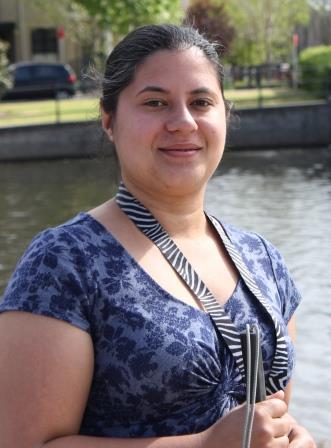Imagine being able to learn information about your surroundings from sound.
Similar to a system used by bats to help them find their prey in the dark, people who practice echolocation, or flash sonar, have developed an ability to use sound to help them navigate.
It works by listening to returning echoes and using them to build up a sonic map of the environment.
In fact, echoes provide a great deal of information from distances much further than a white cane can reach and, according to those who practice the technique it can help them to build a visual picture of their surroundings.
Recently, Vision Australia worked with World Access for the Blind Australia to arrange a visit from American, Daniel Kish. Daniel is President of World Access for the Blind in America and an expert in human echolocation. He has been blind since he was just 13 months old.
Orientation and Mobility instructors from Vision Australia spent a day with Daniel, learning about the technique and how, alongside traditional tools, such as the white cane or Seeing Eye Dog, it can be used by people living with low vision and blindness to enhance their mobility.
According to Marta Fonmudeh, an Orientation and Mobility Instructor from Vision Australia who has been teaching the technique since she met Daniel in 2012, echolocation can give the user extra information about their surroundings.
“Echolocation can provide a lot of information about the environment and help paint the picture beyond the reach of a cane. It provides information about objects far and near in your surroundings, complementing the tactile information that you can pick up through the tip of a white cane. It is important to be aware that echolocation will not replace a white cane or Seeing Eye Dog as a primary mobility aid, but complement it.”
While in Australia Daniel ran a series of workshops for people living with blindness and low vision, and a group of eight adults met with him at Vision Australia’s Sydney head office in Enfield. He also ran a workshop for children on the same day.
The article below was written by Sue Ann Hanson and details her experience of echolocation.
Sue Ann is legally blind due to a condition called Retinitis Pigmentosa, a condition that affects her peripheral vision. Her eyesight is deteriorating and the 28 year old, uses a Seeing Eye Dog called Zeta.
Click clack front and back…and listen by Sue-Ann Hanson and Daniel Kish.
Last weekend, I was one of eight adults with vision impairments gathered at Vision Australia, Enfield to take part in a workshop on echolocation run by renowned expert and orientation and mobility specialist, Daniel Kish.
Susan Thompson, an Advocacy officer at Vision Australia, described to the group her experience of echolocation.
“When I went to the school at North Rocks, a boy there was always clicking his tongue,” she said. “I thought it was strange, but then again he had the best mobility skills out of the lot of us.”
“It can actually be counterproductive to click all of the time,” Daniel Kish explained.
“Echolocation is more than just clicking and listening. Think of it as a conversation with your environment. The echo signal can be highly changeable, depending on the environment we are in. For example you may need an intense echo to break through a noisy area.”
Daniel then allowed each member to find their natural click. When a couple of people were struggling, his experience showed as he retrieved a plastic spoon to place under their tongue to aid with the proper click. Addressing the frustration of participants, he said “Like anything, it takes practice. Instead of saying ‘I can’t do it!’ say ‘I can’t do it yet.’”
As a client with low vision and a Seeing Eye Dog, I was curious as to whether echolocation could aid me. Daniel instantly made me feel at ease by disproving the misconception that you need to be completely blind to truly appreciate echolocation.
“I have taught people with every eye condition under the sun, people with varying degrees of vision, people with white canes, dogs, hearing impairments and sighted people to use echolocation successfully,” said Daniel.
“I found that for people with usable vision, echolocation is important for two reasons. Firstly, it is an extra tool for people to use in darkened or glare areas to help them navigate and secondly, it helps people to develop more sustained attention; to settle easier in the environment around them. You choose what to get from the environment,” he added.
Our group then moved outside to practice our new found skill and I was able to locate trees and encircle a gazebo using echolocation while under blindfold.
Overall, it was an exhilarating experience and I found myself unconsciously clicking for the rest of the weekend.
Daniel is soon to release a book called Flash Sonar which I am certain will get you clicking along with me.

More information
Vision Australia’s specialist Orientation and Mobility instructors can teach people how to use a number of different tools and devices to help you get around safely and be able to participate fully in your local community. For more information call 1300 84 74 66 or visit how to learning to live independently in the community.










